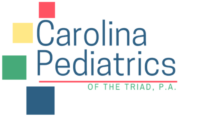Parent Resources
Bright Futures Parent Handout: 2½ Year Visit
View spanish version, share, or print this article.
ICD10
-
Z00.12 -
99382 -
99392
Here are some suggestions from Bright Futures experts that may be of value to your family.
Family Routines
-
Enjoy meals together as a family and always include your child.
-
Have quiet evening and bedtime routines.
-
Visit zoos, museums, and other places that help your child learn.
-
Be active together as a family.
-
Stay in touch with your friends. Do things outside your family.
-
Make sure you agree within your family on how to support your child’s growing independence, while maintaining consistent limits.
Learning to Talk and Communicate
-
Read books together every day. Reading aloud will help your child get ready for preschool.
-
Take your child to the library and story times.
-
Listen to your child carefully and repeat what she says using correct grammar.
-
Give your child extra time to answer questions.
-
Be patient. Your child may ask to read the same book again and again.
Getting Along with Others
-
Give your child chances to play with other toddlers. Supervise closely because your child may not be ready to share or play cooperatively.
-
Offer your child and his friend multiple items that they may like. Children need choices to avoid battles.
-
Give your child choices between 2 items your child prefers. More than 2 is too much for your child.
-
Limit TV, tablet, or smartphone use to no more than 1 hour of high-quality programs each day. Be aware of what your child is watching.
-
Consider making a family media plan. It helps you make rules for media use and balance screen time with other activities, including exercise.
Getting Ready for Preschool
-
Think about preschool or group child care for your child. If you need help selecting a program, we can give you information and resources.
-
Visit a teachers’ store or bookstore to look for books about preparing your child for school.
-
Join a playgroup or make playdates.
-
Make toilet training easier.
-
Dress your child in clothing that can easily be removed.
-
Place your child on the toilet every 1 to 2 hours.
-
Praise your child when he is successful.
-
-
Try to develop a potty routine.
-
Create a relaxed environment by reading or singing on the potty.
Safety
-
Make sure the car safety seat is installed correctly in the back seat. Keep the seat rear facing until your child reaches the highest weight or height allowed by the manufacturer. The harness straps should be snug against your child’s chest.
-
Everyone should wear a lap and shoulder seat belt in the car. Don’t start the vehicle until everyone is buckled up.
-
Never leave your child alone inside or outside your home, especially near cars or machinery.
-
Have your child wear a helmet that fits properly when riding bikes and trikes or in a seat on adult bikes.
-
Keep your child within arm’s reach when she is near or in water.
-
Empty buckets, play pools, and tubs when you are finished using them.
-
When you go out, put a hat on your child, have her wear sun protection clothing, and apply sunscreen with SPF of 15 or higher on her exposed skin. Limit time outside when the sun is strongest (11:00 am–3:00 pm).
-
Have working smoke and carbon monoxide alarms on every floor. Test them every month and change the batteries every year. Make a family escape plan in case of fire in your home.
What to Expect at Your Child’s 3 Year Visit
We will talk about
-
Caring for your child, your family, and yourself
-
Playing with other children
-
Encouraging reading and talking
-
Eating healthy and staying active as a family
-
Keeping your child safe at home, outside, and in the car
The information contained in this handout should not be used as a substitute for the medical care and advice of your pediatrician. There may be variations in treatment that your pediatrician may recommend based on individual facts and circumstances. Original handout included as part of the Bright Futures Tool and Resource Kit, 2nd Edition.
Listing of resources does not imply an endorsement by the American Academy of Pediatrics (AAP). The AAP is not responsible for the content of external resources. Information was current at the time of publication.
The American Academy of Pediatrics (AAP) does not review or endorse any modifications made to this handout and in no event shall the AAP be liable for any such changes.
© 2019 American Academy of Pediatrics. All rights reserved.
Powered by RemedyConnect
disclaimer
Denver Data Feed


